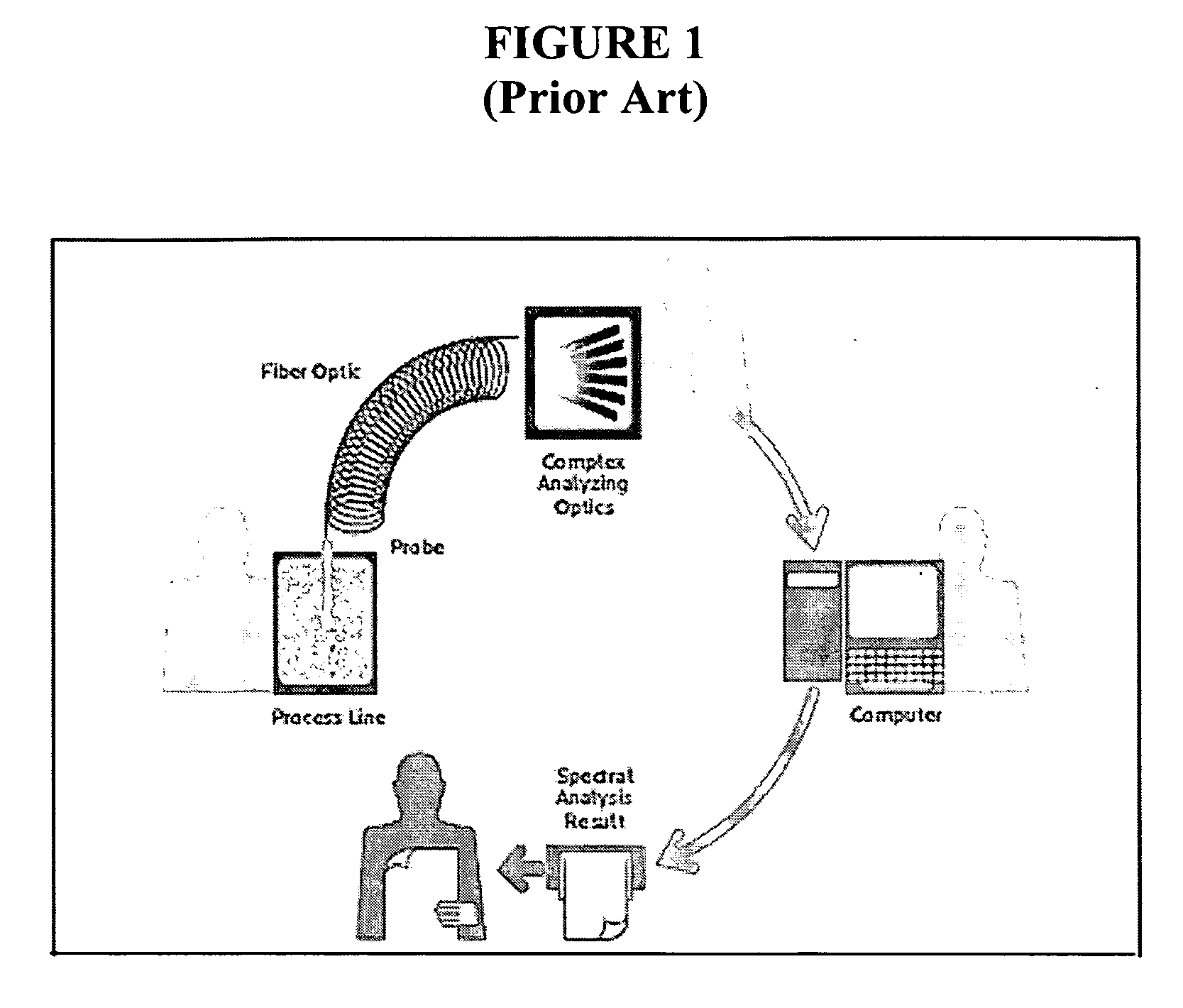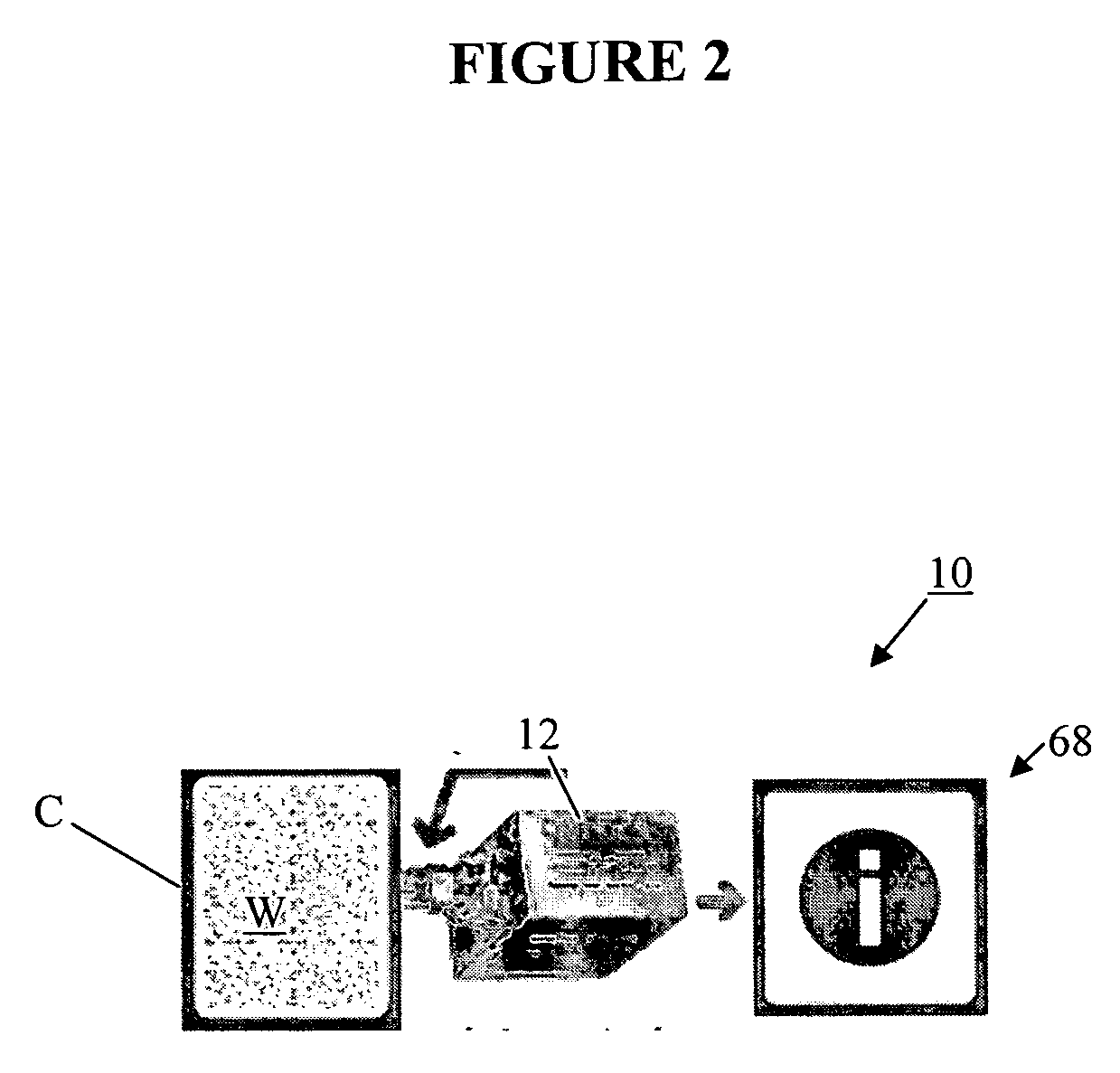Methods of assessing and designing an application specific measurement system
a measurement system and application technology, applied in the direction of optical radiation measurement, instruments, spectrometry/spectrophotometry/monochromators, etc., can solve the problems of less attractive capital equipment investment, waste of resources in installation and training, and high cost of money, so as to avoid this constraint, improve the degree of confidence, and be reliable and economical to develop and employ
- Summary
- Abstract
- Description
- Claims
- Application Information
AI Technical Summary
Benefits of technology
Problems solved by technology
Method used
Image
Examples
example i
Pharmaceutical Application
[0080]About Ninety (90) spectra were analyzed:[0081]Spectra were separated into two groups: Calibration (to develop appropriate models) and Validation (to test the models for their predictive accuracy). No spectra were discarded as “outliers” in the analysis.[0082]Spectra were analyzed using methods according to the invention and theoretical and practical precision determined.[0083]The entire spectral range from 945 to 1700 nm of the exemplary data was modeled. Many different spectral subregions were modeled, and an optimal spectral range for the exemplary system determined.[0084]Systems with a theoretical precision of
[0085]With basic theoretical performance levels and spectral range determined, a complete system was designed and modeled for total system performance:[0086]Many different designs and subsystems were tested and iterated.[0087]>100 application specific MOE real designs were investigated. Several viable designs were successfully obtained.[0088]...
example ii
[0091]Eleven (11) samples were prepared with known quantities of aspirin and lactose, ranging from 0% aspirin to 100% aspirin.
[0092]NIR spectra were collected for each of the samples.[0093]Spectra were separated into two groups: Calibration (to develop appropriate models) and Validation (to test the models for their predictive accuracy). No spectra were discarded as “outliers” in the analysis.[0094]Spectra were analyzed using methods according to the invention and theoretical and practical precision determined.[0095]Principal Component Analysis and Partial Least Squares analysis were performed on the spectral data and a predicted error was calculated.
[0096]Spectral regions from 1000 nm to 3500 nm were analyzed along with subregions.
[0097]Concentration ranges within the full 0-100% range were analyzed to enabled improved model prediction.
[0098]With basic theoretical performance levels and spectral range determined, a complete system was designed and modeled for...
PUM
 Login to View More
Login to View More Abstract
Description
Claims
Application Information
 Login to View More
Login to View More - R&D
- Intellectual Property
- Life Sciences
- Materials
- Tech Scout
- Unparalleled Data Quality
- Higher Quality Content
- 60% Fewer Hallucinations
Browse by: Latest US Patents, China's latest patents, Technical Efficacy Thesaurus, Application Domain, Technology Topic, Popular Technical Reports.
© 2025 PatSnap. All rights reserved.Legal|Privacy policy|Modern Slavery Act Transparency Statement|Sitemap|About US| Contact US: help@patsnap.com



